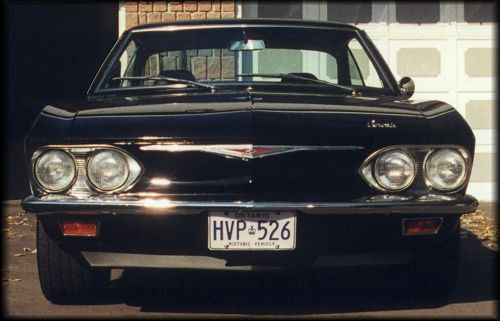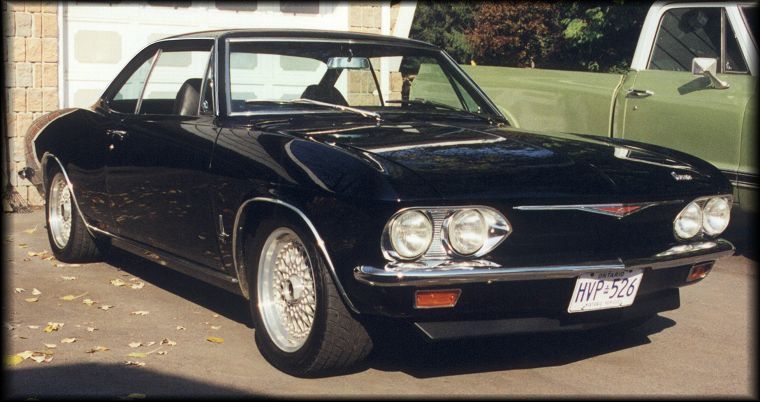

![]()
Dave Binnie's Blow-through Turbo
|
How often have you met someone who's owned 50 Corvairs? Three, five, even 10 Corvairs, yes, but 50? To say Dave Binnie was bitten by the Corvair bug is an understatement. Since 1975, he's held title to more than 50 Corvairs and still hasn't had enough! Ask him what got him started, and he'll tell you his shop teacher, Kevin Bowler, got him hooked. After all these years, Dave says Kevin is still a Corvair enthusiast and a good friend he sees often. He also remembers reading about the Corvair in a book by a certain consumer advocate, and says, "That did it. I had to have one." Binnie enjoys a challenge, and is particularly fascinated by good ideas that others haven't properly executed. One such idea is the subject of this feature article; the concept of using a blow-through turbocharger setup on the Corvair engine. Unlike the stock 150 and 180 HP draw-through turbocharged Corvair engines, a blow-through engine applies boost upstream of the carburetion. The turbocharger is positioned between the air cleaner and the carburetor, instead of between the carburetor and the intake plenum. This enables the turbocharger to work more efficiently because the carburetor is removed from the path of incoming air, eliminating a restriction. Why didn't GM do this? It's anybody's guess, but it might have something to do with the fact that the blow-through setup requires the addition of a wastegate and, in the case of Dave's configuration, other components. A blow-through design would have been more expensive to produce. Those unfamiliar with the factory turbo setup may want to check the Turbo section of this site for pictures of the production configuration. Doing so will make it easier to appreciate the design differences. |
|
Dave's friend and fellow Corvair enthusiast Bruce Webster found the perfect car for the turbo project, a very straight 1965 Monza sport coupe. It was sitting under a tree in Uxbridge, ON, Canada. Dave lives not far away, near Toronto, Ontario, so getting it home was easy. Networking with other Corvair enthusiasts pays off, and Dave does so regularly through his memberships in CORSA Ontario (a chapter of the Corvair Society of America), and the Internet e-mail Corvair discussion group Virtual Vairs. |
 |
|
Before starting his engine project, Dave removed the Monza's power train; a stock 110 hp engine, Powerglide transmission and 1965 style transaxle assembly. He installed a beefier 1966-69 vintage Saginaw 4-speed transaxle with a final drive ratio of 3.55:1 and swapped in the associated 4-speed shifter and linkage. He also disassembled the Monza's suspension, replaced the springs with units intended for the Corsa model equipped with air-conditioning, and replaced all bushings and fasteners with new ones. He cut one coil from the Corsa springs and replaced the stock 13" wheels and tires with a set of 16 x 8" BBS RS 3-piece modular wheels and low profile tires; 205/50/16 tires, front, and 225/50/16, rear. This resulted in the stance seen in the picture below. |

|
Dave added a '66 and later style chin spoiler to improve high speed stability and fuel economy, and replaced the wheel arch and rocker panel trim with new NOS stock ,1965 pieces. Now that we've had a good look at the car, let's pop the deck lid and learn more about the Binnie approach to blow-through turbocharging. |
Click the road sign for more.
Select from the navigation bar!